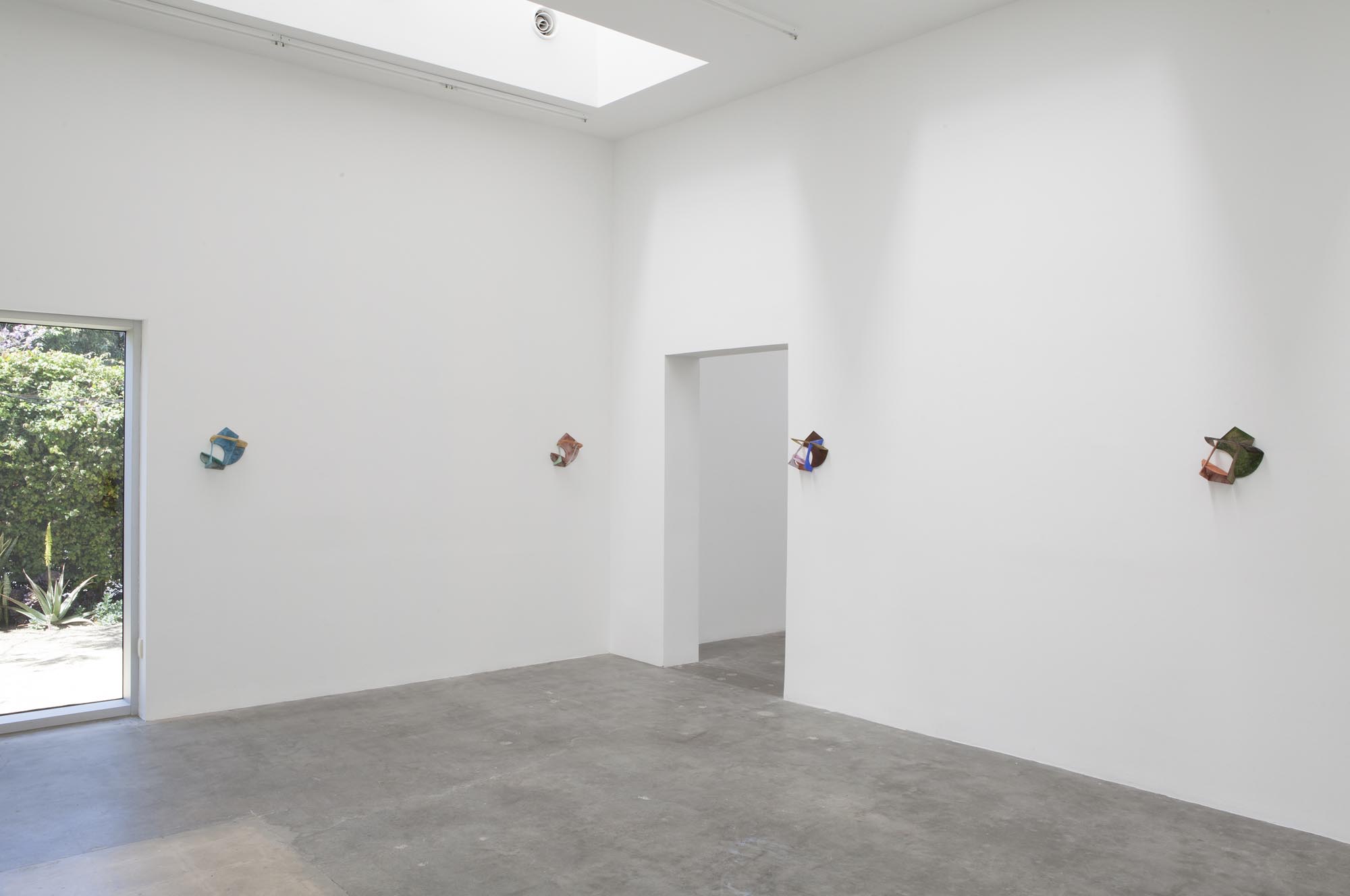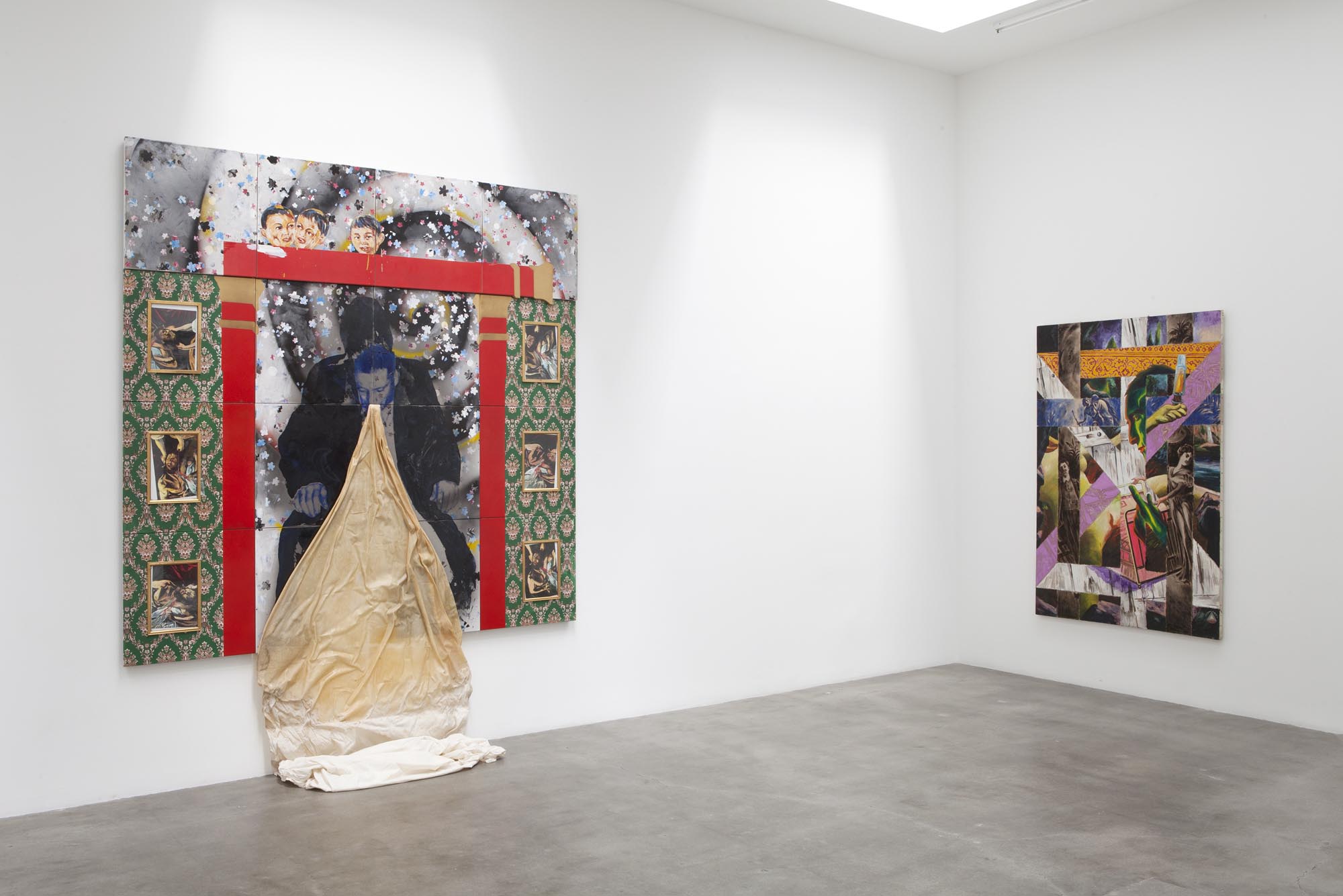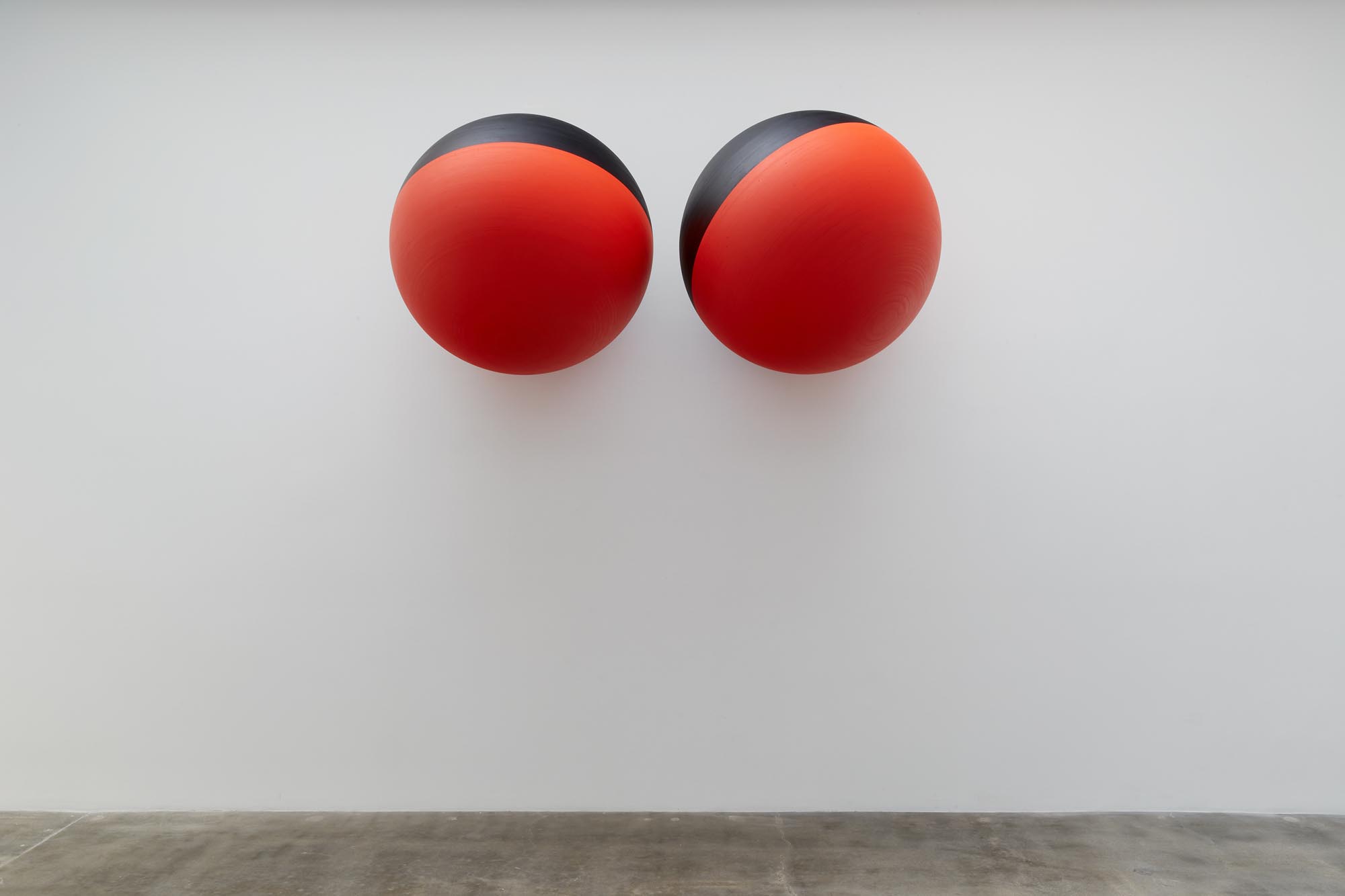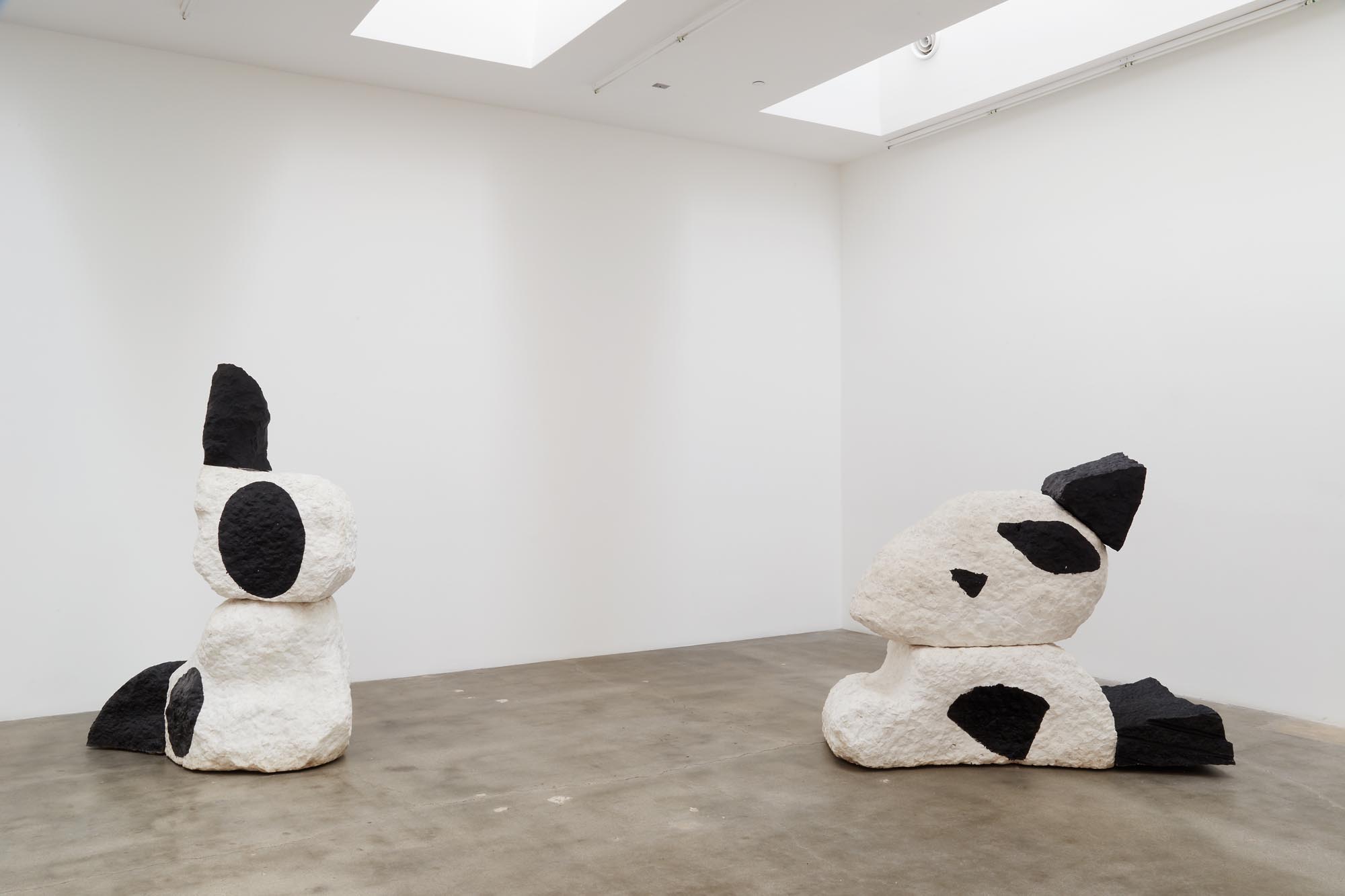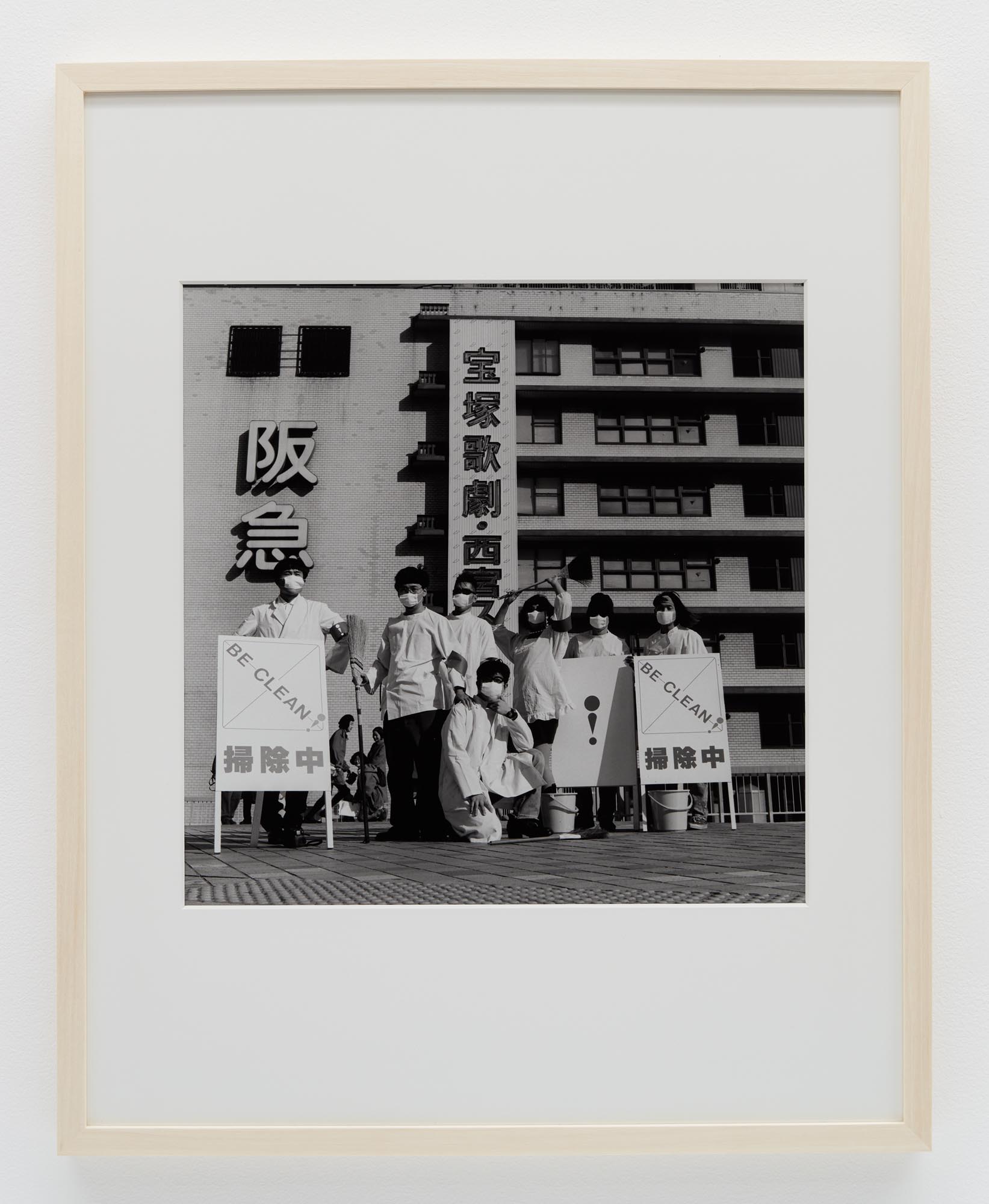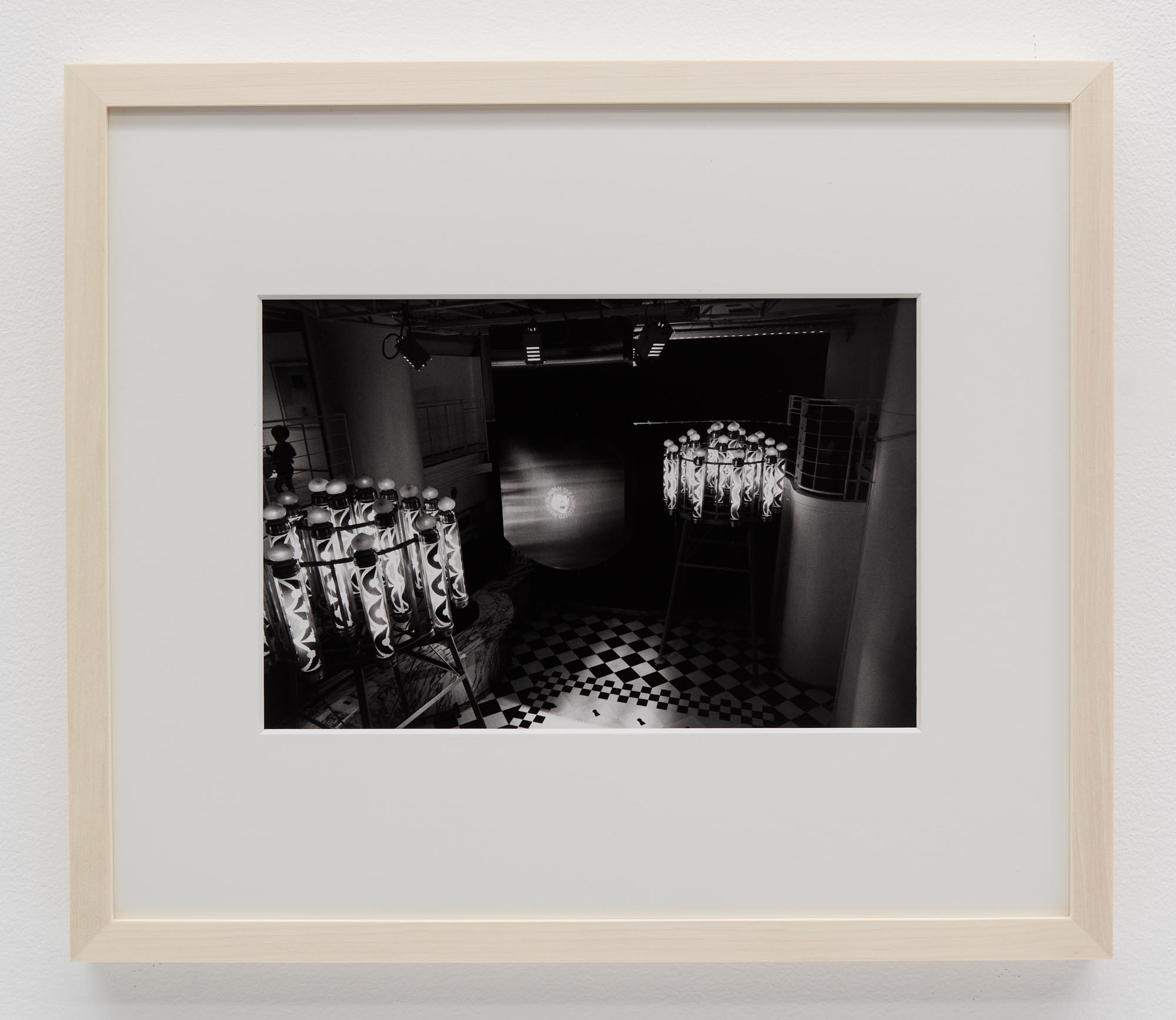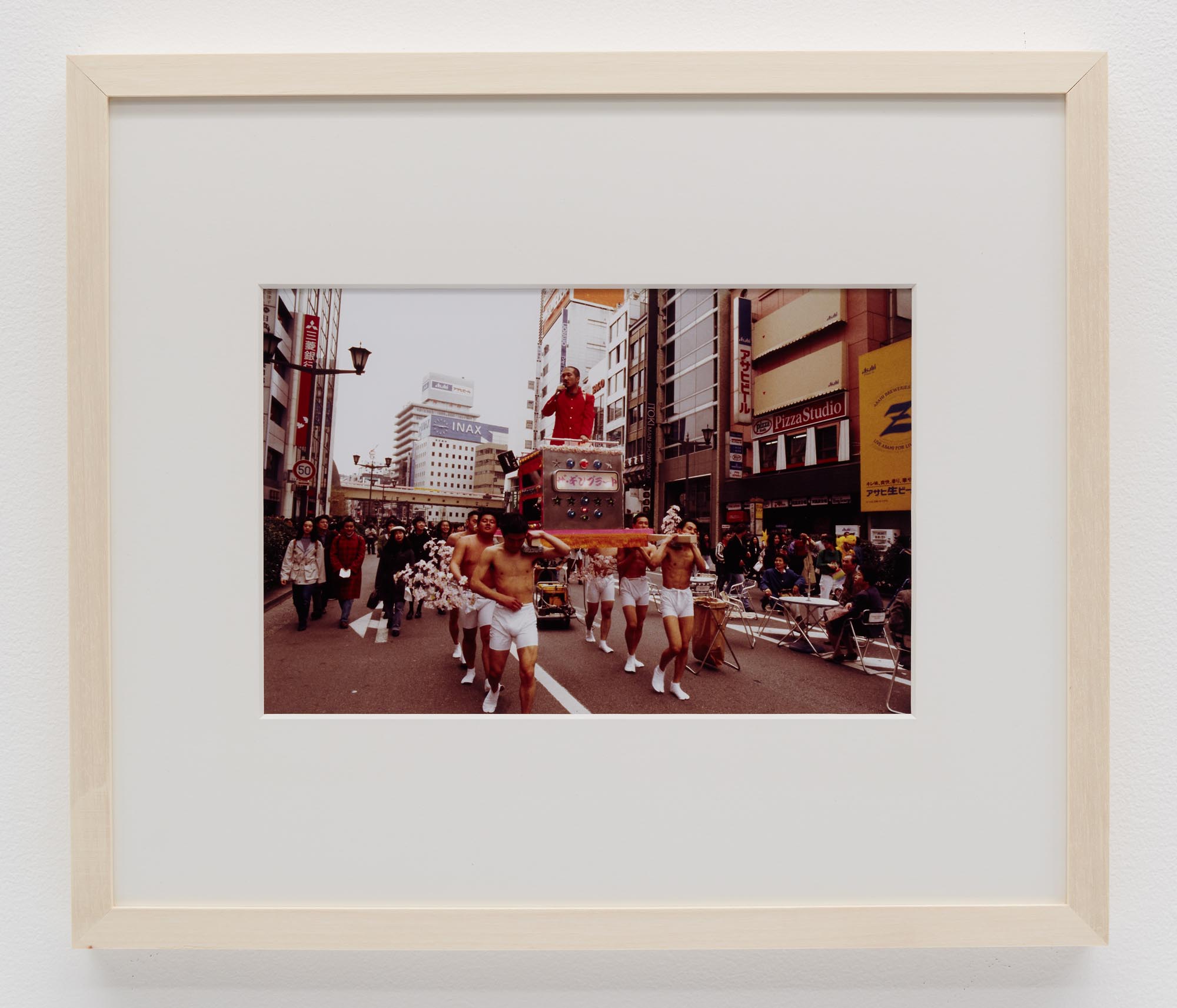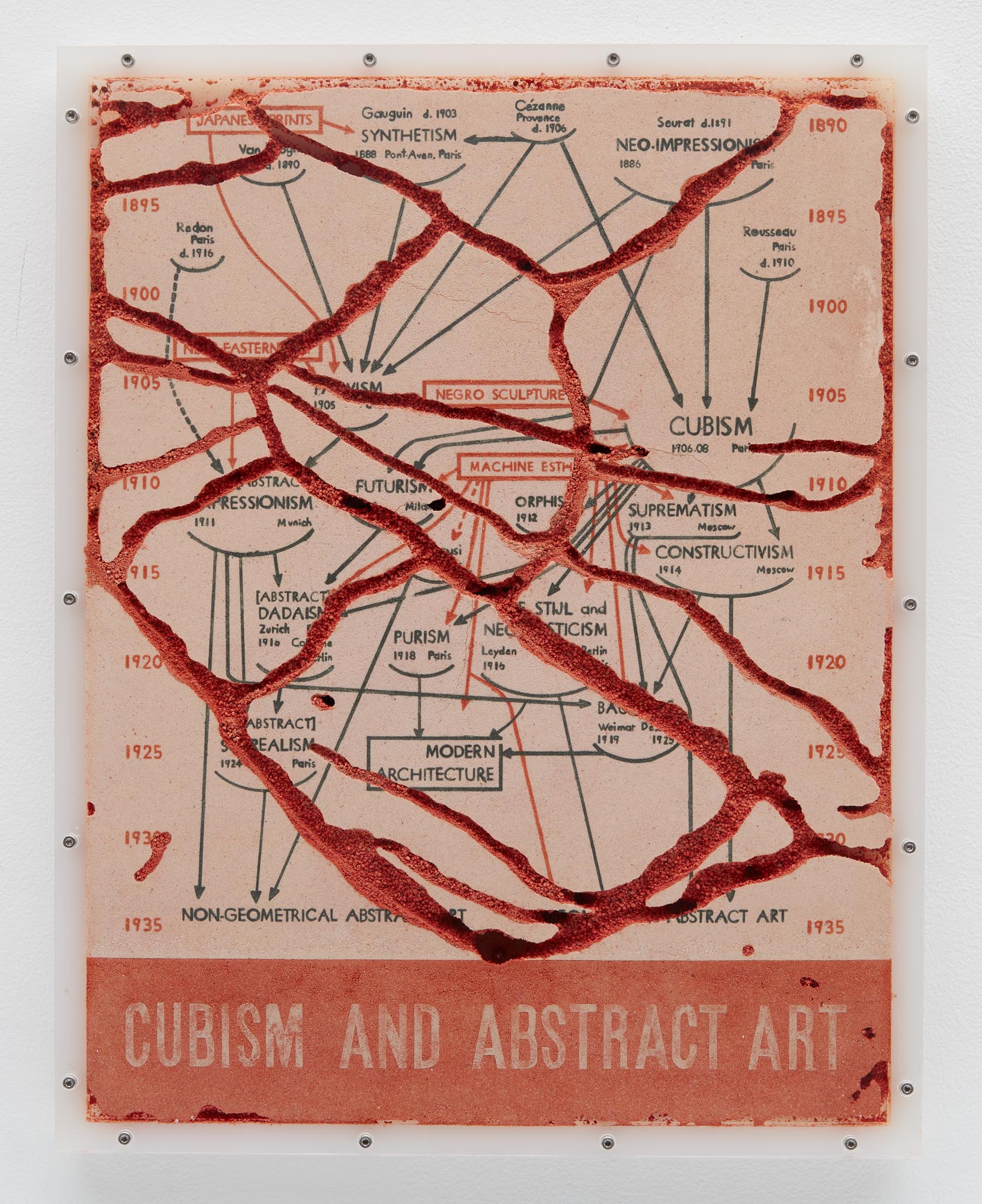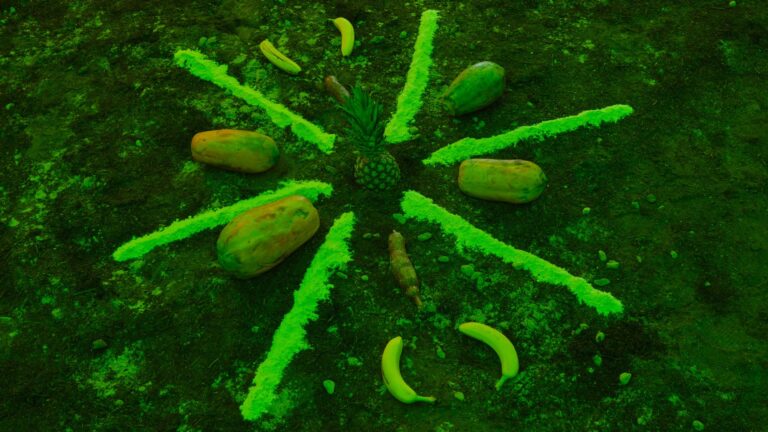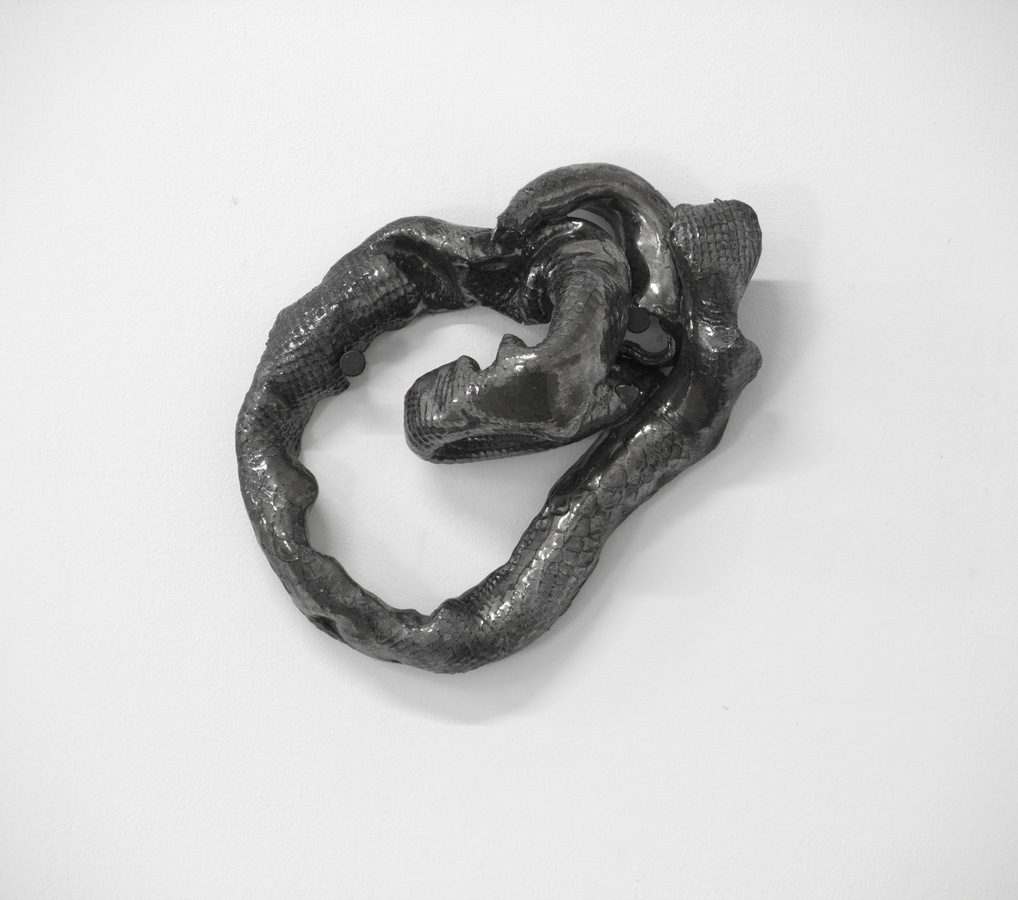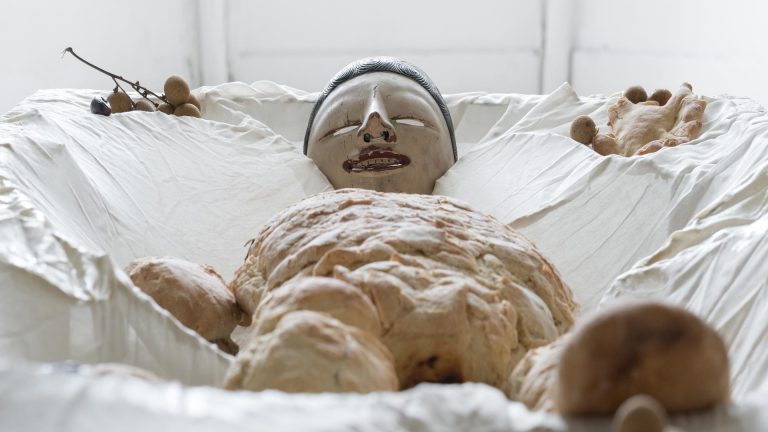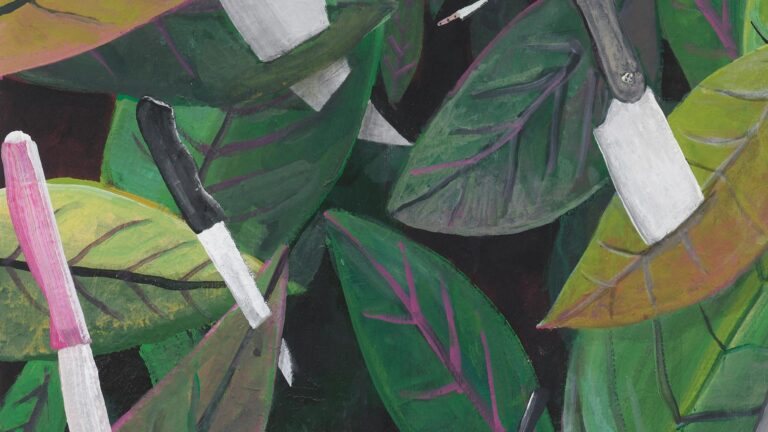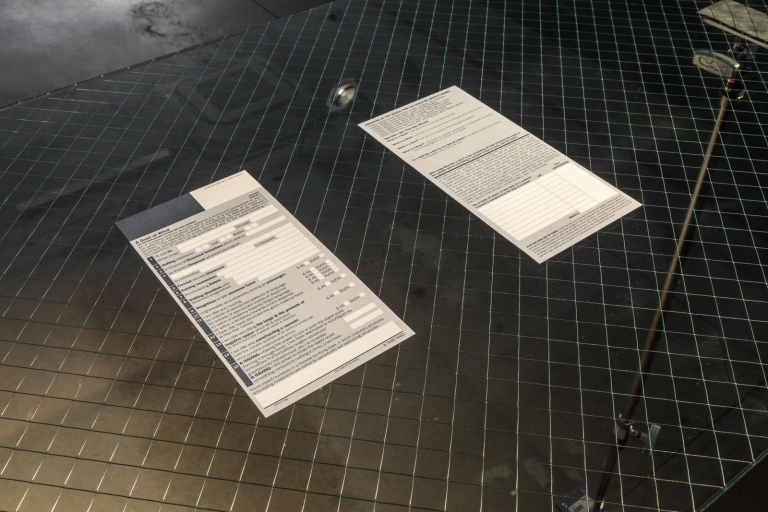Artists: EYE, Keiji Haino, Yuki Kimura, Mariko Mori, Kodai Nakahara, Masato Nakamura, Kenjiro Okazaki, Otomo Yoshihide, Gin Satoh, Small Village Center, Katsumi Watanabe, Yukinori Yanagi, Kenji Yanobe, Tadanori Yokoo, YoshimiO / SAICOBAB
Exhibition title: PART II – Parergon: Japanese Art of the 1980s and 1990s
Curated by: Mika Yoshitake
Venue: Blum & Poe, Los Angeles, US
Date: April 6 – May 19, 2019
Photography: all images copyright and courtesy of the artists and Blum & Poe, Los Angeles
Blum & Poe is pleased to announce the second installment of Parergon: Japanese Art of the 1980s and 1990s, a selected survey exhibition curated by Mika Yoshitake. Focusing on the themes of retro-futurism, noir, satire, and simulation, as well as those that probe national boundaries, the show is presented in two parts at Blum & Poe in Los Angeles. Works from over twenty-five artists including EYE, Kenjiro Okazaki, Mariko Mori, Kodai Nakahara, Masato Nakamura, Yukinori Yanagi, Kenji Yanobe, and Tadanori Yokoo feature media spanning painting, sculpture, performance, noise, video, and photography. A catalogue will be published for the occasion, with artist testimonials and new scholarship by Yoshitake and David Novak, award-winning author of Japanoise: Music at the Edge of Circulation (Duke University Press Books, 2013).
Part II of Parergon expands on the thematic territories explored in Part I, with seminal installations and sculptures from the era and performances by renowned figures of noise, sound, and electro-acoustic music genres. Kenji Yanobe’s Tanking Machine (Rebirth) (2019) is a darkly humorous, interactive, sci-fi sculpture first presented in 1989 that addresses the ever-present reality of nuclear crisis through a retro-futurist narrative. Influential multimedia artist, Kodai Nakahara’s bizarre installations of figurine-like marble stones and brightly, suspended spheres reflect a humorous take on sculpture’s “post-medium” condition. As an intellectual and artist, Kenjiro Okazaki’s practice engages with theories of perception through interdisciplinary genres spanning architecture, literary theory, painting, reliefs, sculpture, robotics, and dance. Trained in both Japan and the U.S., Yukinori Yanagi’s large-scale and site-specific installations interrogate the politics of institutional borders and boundaries often drawing from semiotic systems of symbolic imagery. Psychedelic ’60s graphic designer Tadanori Yokoo revisits strategies of historical pastiche with his figurative noir paintings that hang alongside his cut-canvas portraits of Dada figures, as well as ceramic depictions of spiritual mediums. Finally, a dedicated Japanese noise archive of photography, journals, and vinyl records from Tokyo’s experimental underground will also be featured on the second floor giving historical context to the live performances.
The exhibition title makes reference to the gallery in Tokyo (Gallery Parergon, 1981-1987) that introduced many artists associated with the New Wave phenomenon, its name attributed to Jacques Derrida’s essay from 1978 which questioned the “framework” of art, influential to artists and critics during the period. Parergon brings together some of the most enigmatic works that were first generated during a rich two-decade period that are pivotal to the way we perceive and understand contemporary Japanese art today. In the aftermath of the conceptual reconsideration of the object and relationality spearheaded by Mono-ha in the 1970s, this era opened up new critical engagements with language and medium where artists explored expansions in installation, performance, and experimental multi-genre practices.
When the U.S. and Europe were witnessing a return to Expressionism alongside a postmodern aesthetic of simulacra and deconstruction characterized by the Pictures generation, this zeitgeist of cultural capitalism was instead manifest under Japan’s unique social and geo-political conditions resulting from the rise and burst of the bubble economy. Artists began to explore subversive artistic languages and integrate underground subcultures into their practice using a variety of media, ranging from experimentations in electro-acoustic music, geopolitical and conceptual photography, and appropriations of advertisement culture. Others addressed the internalization of historical avant-garde and modernist aesthetics that were filtered through a new poetics of form, space, and language.
In the post-1989 Hirohito era, politics of gender, nuclear crisis, and critique of nationalism are especially poignant among artists from the Kansai region. This period also witnesses the rise of art collectives in the mid-90s and their darkly humorous performances and conceptual practices that reevaluated the history of Japan’s postwar avant-garde. These events reflect on a subculture generated out of a profoundly unique “infantile capitalism,” anticipating the explosive rise of the Neo-Pop generation.
This exhibition is presented on the occasion of Blum & Poe’s 25-year anniversary. Parergon commemorates a special facet of the gallery’s history rooted in this very timeframe in Japan-with Tim Blum’s early years as an art dealer and curator spent in Tokyo in the early ’90s-and charts a bridge between the Japanese art historical territories the gallery has long championed. Parergon pursues the creative significance of the years between the milestones of Mono-ha and the Neo-Pop generation now synonymous with Takashi Murakami and Yoshitomo Nara.
PART II – Parergon: Japanese Art of the 1980s and 1990s, Curated by Mika Yoshitake, Installation view, 2019, Blum & Poe, Los Angeles, Courtesy of the artists and Blum & Poe, Los Angeles/New York/Tokyo
PART II – Parergon: Japanese Art of the 1980s and 1990s, Curated by Mika Yoshitake, Installation view, 2019, Blum & Poe, Los Angeles, Courtesy of the artists and Blum & Poe, Los Angeles/New York/Tokyo
PART II – Parergon: Japanese Art of the 1980s and 1990s, Curated by Mika Yoshitake, Installation view, 2019, Blum & Poe, Los Angeles, Courtesy of the artists and Blum & Poe, Los Angeles/New York/Tokyo
PART II – Parergon: Japanese Art of the 1980s and 1990s, Curated by Mika Yoshitake, Installation view, 2019, Blum & Poe, Los Angeles, Courtesy of the artists and Blum & Poe, Los Angeles/New York/Tokyo
PART II – Parergon: Japanese Art of the 1980s and 1990s, Curated by Mika Yoshitake, Installation view, 2019, Blum & Poe, Los Angeles, Courtesy of the artists and Blum & Poe, Los Angeles/New York/Tokyo
PART II – Parergon: Japanese Art of the 1980s and 1990s, Curated by Mika Yoshitake, Installation view, 2019, Blum & Poe, Los Angeles, Courtesy of the artists and Blum & Poe, Los Angeles/New York/Tokyo
PART II – Parergon: Japanese Art of the 1980s and 1990s, Curated by Mika Yoshitake, Installation view, 2019, Blum & Poe, Los Angeles, Courtesy of the artists and Blum & Poe, Los Angeles/New York/Tokyo
PART II – Parergon: Japanese Art of the 1980s and 1990s, Curated by Mika Yoshitake, Installation view, 2019, Blum & Poe, Los Angeles, Courtesy of the artists and Blum & Poe, Los Angeles/New York/Tokyo
PART II – Parergon: Japanese Art of the 1980s and 1990s, Curated by Mika Yoshitake, Installation view, 2019, Blum & Poe, Los Angeles, Courtesy of the artists and Blum & Poe, Los Angeles/New York/Tokyo
PART II – Parergon: Japanese Art of the 1980s and 1990s, Curated by Mika Yoshitake, Installation view, 2019, Blum & Poe, Los Angeles, Courtesy of the artists and Blum & Poe, Los Angeles/New York/Tokyo
PART II – Parergon: Japanese Art of the 1980s and 1990s, Curated by Mika Yoshitake, Installation view, 2019, Blum & Poe, Los Angeles, Courtesy of the artists and Blum & Poe, Los Angeles/New York/Tokyo
PART II – Parergon: Japanese Art of the 1980s and 1990s, Curated by Mika Yoshitake, Installation view, 2019, Blum & Poe, Los Angeles, Courtesy of the artists and Blum & Poe, Los Angeles/New York/Tokyo
PART II – Parergon: Japanese Art of the 1980s and 1990s, Curated by Mika Yoshitake, Installation view, 2019, Blum & Poe, Los Angeles, Courtesy of the artists and Blum & Poe, Los Angeles/New York/Tokyo
PART II – Parergon: Japanese Art of the 1980s and 1990s, Curated by Mika Yoshitake, Installation view, 2019, Blum & Poe, Los Angeles, Courtesy of the artists and Blum & Poe, Los Angeles/New York/Tokyo
PART II – Parergon: Japanese Art of the 1980s and 1990s, Curated by Mika Yoshitake, Installation view, 2019, Blum & Poe, Los Angeles, Courtesy of the artists and Blum & Poe, Los Angeles/New York/Tokyo
PART II – Parergon: Japanese Art of the 1980s and 1990s, Curated by Mika Yoshitake, Installation view, 2019, Blum & Poe, Los Angeles, Courtesy of the artists and Blum & Poe, Los Angeles/New York/Tokyo
EYE, Sleeve art for Super roots 9, 2006, Colored pen on paper, 15 1/2 x 15 1/2 x 1 3/4 inches framed (39.4 x 39.4 x 4.4 centimeters), © EYE, Courtesy of the artist and Blum & Poe, Los Angeles/New York/Tokyo
EYE, Sleeve art for Lift Boys 12”, 2012, Colored pencil on paper, 15 3/4 x 12 1/4 x 1 3/4 inches framed (40 x 31.1 x 4.4 centimeters), © EYE, Courtesy of the artist and Blum & Poe, Los Angeles/New York/Tokyo
Gin Satoh, Untitled, 1978, Gelatin silver print on Hishi copy paper, 11 3/4 x 16 1/2 inches (29.7 x 42.0 centimeters), © Gin Satoh, Courtesy of the artist and Blum & Poe, Los Angeles/New York/Tokyo
Gin Satoh, Untitled, 1979, Gelatin silver print on Hishi copy paper, 11 3/4 x 16 1/2 inches (29.7 x 42 centimeters), © Gin Satoh, Courtesy of the artist and Blum & Poe, Los Angeles/New York/Tokyo
Gin Satoh, Untitled, 1979, Gelatin silver print on Hishi copy paper, 11 3/4 x 16 1/2 inches (29.7 x 42 centimeters), © Gin Satoh, Courtesy of the artist and Blum & Poe, Los Angeles/New York/Tokyo
Gin Satoh, Untitled, 1982, Gelatin silver print on Hishi copy paper, 11 3/4 x 16 1/2 inches (29.7 x 42 centimeters), © Gin Satoh, Courtesy of the artist and Blum & Poe, Los Angeles/New York/Tokyo
Gin Satoh, Untitled, 1984, Gelatin silver print on Hishi copy paper, 11 3/4 x 16 1/2 inches (29.7 x 42 centimeters), © Gin Satoh, Courtesy of the artist and Blum & Poe, Los Angeles/New York/Tokyo
Gin Satoh, Untitled, 1985, Gelatin silver print on Hishi copy paper, 11 3/4 x 16 1/2 inches (29.7 x 42 centimeters), © Gin Satoh, Courtesy of the artist and Blum & Poe, Los Angeles/New York/Tokyo
Kenjiro Okazaki, The water-soaked stem of the lamp does not light, despite numerous attempts. I didn’t know what kind of words to use, so I just kept peering into his eyes and listening to his voice, licking his round forehead with my tongue, and was to know a shapeless, sour emotional reticence, cold like iron. Any single day has a story to tell. And so they sit themselves down and sing songs intended to lure people back from the inside to the outside., 2004, Acrylic on canvas, 79 x 57 x 2 3/4 inches (200.7 x 144.8 x 7 centimeters), © Kenjiro Okazaki, Courtesy of the artist and Blum & Poe, Los Angeles/New York/Tokyo
Kenjiro Okazaki, Okachimachi 2018–1, 1981/2018, Acrylic, pigment, polypropylene, polyethylene, 10 x 10 x 5 inches (25.4 x 25.4 x 12.7 centimeters), © Kenjiro Okazaki, Courtesy of the artist and Blum & Poe, Los Angeles/New York/Tokyo
Kenjiro Okazaki, Akasakamitsuke #31, 1981/2012, Acrylic, pigment, polypropylene, polyethylene, 11 x 9 3/4 x 10 1/2 inches (27.9 x 24.8 x 26.7 centimeters), © Kenjiro Okazaki, Courtesy of the artist and Blum & Poe, Los Angeles/New York/Tokyo
Kenjiro Okazaki, The field is green, the little birds sing, the dew shines, the smoke rises, and everything that can be seen here and there was “someone.” Everything that touches the heart, that appears in light and transforms, is surely the deed of “someone.” If plants did not have emotions, the senses that fill the earth would become scant and sparse. The heart in the shape of an insect that flies around the flowers must also be lonely. There is not one thing that touches the eyes or the ears of beasts that run through the forest. But when the beast suddenly becomes thirsty in front of a puddle, that very thirst is “someone.” The branches of the hazel move, the sun sets west. Salty wind, sea wind, wander around in search of what., 2016, Acrylic on canvas, 82 3/4 x 102 1/4 x 3 inches (210.2 x 259.7 x 7.6 centimeters), © Kenjiro Okazaki, Courtesy of the artist and Blum & Poe, Los Angeles/New York/Tokyo
Kenjiro Okazaki, The blue bamboo ville in my village / Làng tôi có lũy trẻ xanh, 2015, Acrylic on canvas, 7 1/4 x 6 1/2 x 1 1/4 inches (18.4 x 16.5 x 3.2 centimeters), © Kenjiro Okazaki, Courtesy of the artist and Blum & Poe, Los Angeles/New York/Tokyo
Kenjiro Okazaki, KonoHananoSakuyahime / trăng mật thoáng qua, 2018, Acrylic on canvas, 9 1/4 x 7 1/4 x 1 1/4 inches (23.5 x 18.4 x 3.2 centimeters), © Kenjiro Okazaki, Courtesy of the artist and Blum & Poe, Los Angeles/New York/Tokyo
Kodai Nakahara, Kodainomorpho, 1988, Oil paint on plywood, Two parts; 47 1/4 inches diameter each (120 centimeters), © Kodai Nakahara, Courtesy of the artist and Blum & Poe, Los Angeles/New York/Tokyo
Kodai Nakahara, Gifuchou, 1989, Urethane paint on marble and stone, Two parts; 83 x 237 3/4 x 36 1/2 inches overall (210.8 x 603.9 x 92.7 centimeters), © Kodai Nakahara, Courtesy of the artist and Blum & Poe, Los Angeles/New York/Tokyo
Katsumi Watanabe, Shinjuku, 1983, Gelatin silver print, 20 1/2 x 16 5/8 x 1 1/4 inches framed (52.1 x 42.2 x 3.2 centimeters), © Watanabe Katsumi Photo Association / Taka Ishii Gallery Photography / Film, Courtesy of the Estate and Blum & Poe, Los Angeles/New York/Tokyo
Katsumi Watanabe, Shinjuku, 1978, Gelatin silver print, 20 1/2 x 16 5/8 x 1 1/4 inches framed (52.1 x 42.2 x 3.2 centimeters), © Watanabe Katsumi Photo Association / Taka Ishii Gallery Photography / Film, Courtesy of the Estate and Blum & Poe, Los Angeles/New York/Tokyo
Katsumi Watanabe, Shinjuku, 1978, Gelatin silver print, 20 1/2 x 16 5/8 x 1 1/4 inches framed (52.1 x 42.2 x 3.2 centimeters), © Watanabe Katsumi Photo Association / Taka Ishii Gallery Photography / Film, Courtesy of the Estate and Blum & Poe, Los Angeles/New York/Tokyo
Kenji Yanobe, Atom Suit, 1987, Geiger counter, PVC, strobe light, mixed media, 71 x 30 3/4 x 23 1/8 inches (180.3 x 78.1 x 58.7 centimeters), © Kenji Yanobe, Courtesy of the artist and Blum & Poe, Los Angeles/New York/Tokyo
Kenji Yanobe, Atom Suit Project: Nursery School 2, Chernobyl, 1997, Light box, 47 1/4 x 47 1/4 x 8 1/4 inches (120 x 120 x 21 centimeters), © Kenji Yanobe, Courtesy of the artist and Blum & Poe, Los Angeles/New York/Tokyo
Kenji Yanobe, Atom Suit Project: Desert, 1998, Light box, 47 1/4 x 47 1/4 x 8 1/4 inches (120 x 120 x 21 centimeters), © Kenji Yanobe, Courtesy of the artist and Blum & Poe, Los Angeles/New York/Tokyo
Mariko Mori, Empty Dream, 1995, Cibachrome print mounted on aluminum, wood, smoke aluminum, Six panels; 9 x 24 feet (274.3 x 731.5 centimeters), © Mariko Mori, Courtesy of the artist and Blum & Poe, Los Angeles/New York/Tokyo
Masato Nakamura, Timothy Blum and Takayo Iida, 1992, 35mm monochrome print on Baryta paper, 16 3/4 x 19 1/2 x 1 3/8 inches framed (42.5 x 49.5 x 3.5 centimeters), © Masato Nakamura, Courtesy of the artist and Blum & Poe, Los Angeles/New York/Tokyo
Masato Nakamura, <Osaka Mixer Plan> 01 / Small Village Center / Hideki Nakazawa,Takashi Murakami, Nakao Ikemiya, Tsuyoshi Ozawa, Min Saibara, Keisuke Nanba, Kiyomichi Shibuya, 1992, 6×6 monochrome print on Baryta paper, 29 3/4 x 23 7/8 x 1 3/8 inches framed (75.5 x 60.5 x 3.5 centimeters), © Masato Nakamura, Courtesy of the artist and Blum & Poe, Los Angeles/New York/Tokyo
Masato Nakamura, Nakamura and Murakami 04 / Tsuruhashi, 1992, 35mm monochrome print on Baryta paper, 16 3/4 x 19 1/2 x 1 3/8 inches framed (42.5 x 49.5 x 3.5 centimeters), © Masato Nakamura, Courtesy of the artist and Blum & Poe, Los Angeles/New York/Tokyo
Masato Nakamura, “THE GINBURART” Muneteru Ujino performance, 1993, Digital color print on photographic paper, 16 3/4 x 19 1/2 x 1 3/8 inches framed (42.5 x 49.5 x 3.5 centimeters), © Masato Nakamura, Courtesy of the artist and Blum & Poe, Los Angeles/New York/Tokyo
Yuki Kimura, Hides of Existence, 1993, Silver gelatin print (toned) mounted on wood, 15 3/4 x 12 5/8 inches (40 x 32.1 centimeters), © Yukie Kimura, Courtesy of the artist and Blum & Poe, Los Angeles/New York/Tokyo
Tadanori Yokoo, Gathering and Dispersing—The Action of Its Power, 1991, Acrylic and gold foil on canvas, 89 1/2 x 89 1/2 inches (227.3 x 227.3 centimeters), © Tadanori Yokoo, Courtesy of the artist and Blum & Poe, Los Angeles/New York/Tokyo
Tadanori Yokoo, Ectoplasm (In Dedication to Caravaggio), 1986, Mixed media on ceramics, 117 x 94 x 19 1/2 inches overall (297.2 x 238.8 x 49.5 centimeters), © Tadanori Yokoo, Courtesy of the artist and Blum & Poe, Los Angeles/New York/Tokyo
Tadanori Yokoo, Spiritualism (In the Case of Salvador Dali), 1986, Glaze, plaster, rope and metals on ceramics, 93 1/4 x 93 3/4 x 6 1/2 inches (236.9 x 238.1 x 16.5 centimeters), © Tadanori Yokoo, Courtesy of the artist and Blum & Poe, Los Angeles/New York/Tokyo
Yukinori Yanagi, Hi-no-maru Portfolio, 1991, Lithograph, embossing and collage on paper, Six parts; 36 3/8 x 27 1/8 x 1 7/8 inches each framed (92.4 x 68.9 x 4.8 centimeters), © Yukinori Yanagi, Courtesy of the artist and Blum & Poe, Los Angeles/New York/Tokyo
Yukinori Yanagi, Cubism and Abstract Art, 2012, Ants, colored sand and plastic box, 21 3/4 x 17 x 1 inches (55.2 x 43.2 x 2.5 centimeters), © Yukinori Yanagi, Courtesy of the artist and Blum & Poe, Los Angeles/New York/Tokyo








